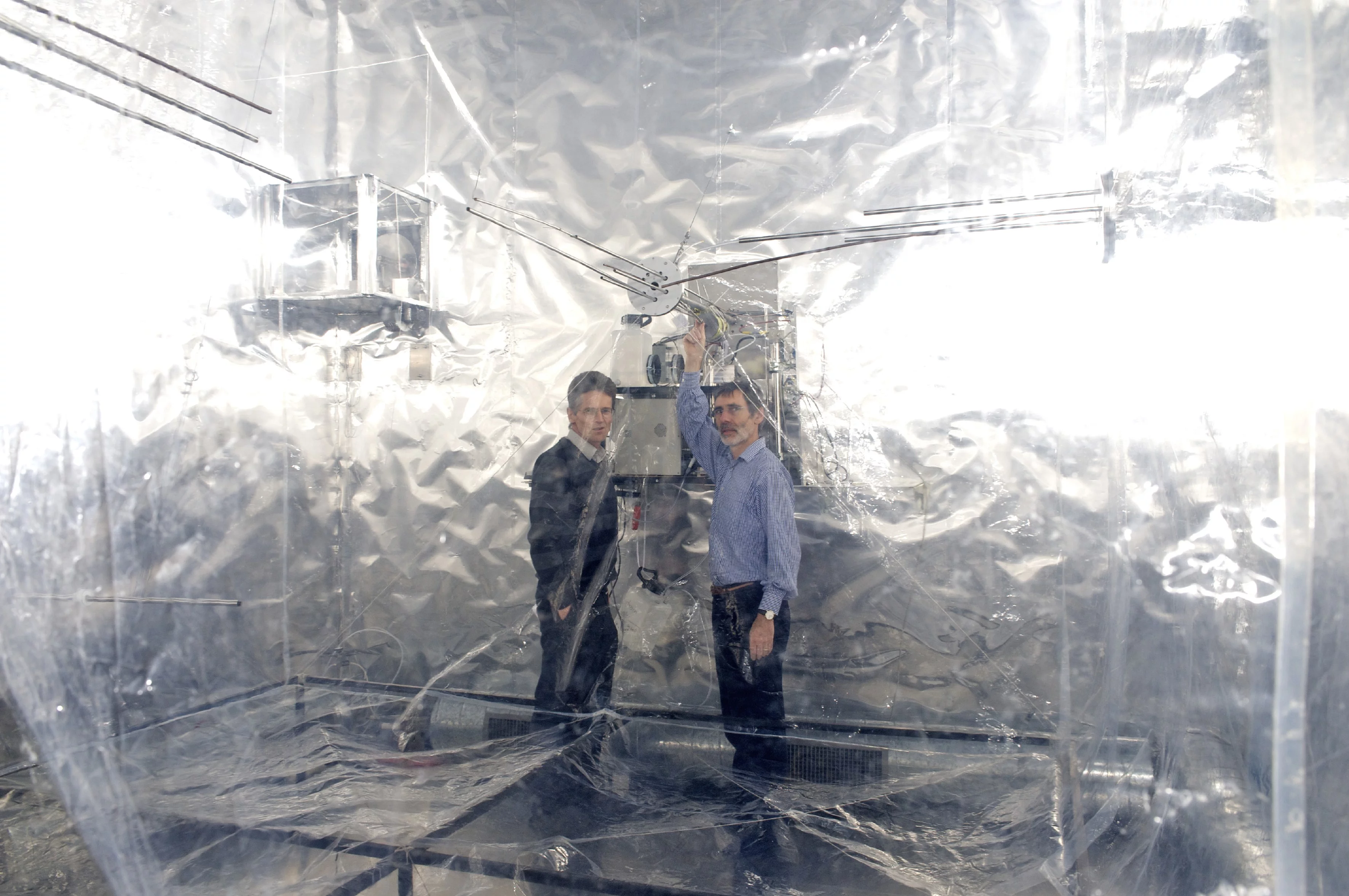Particulate matter from gasoline engines is harmful to our airways, regardless of whether the engines are a bit older or comply with recent EU standards. Fine dust particles allow pathogens to enter the lungs easier. Researchers at the University of Bern and the Paul Scherrer Institute PSI have shown this conducting a realistic laboratory experiment.
According to the latest report from the World Health Organization (WHO), 7 million worldwide died early of the consequences of air pollution in 2012. Studies have shown for more than a decade that particulate matter (PM) in the air adversly affects health. Besides primary particles, i.e. those emitted directly by the source, secondary particles, which are photochemically produced altered by sunlight, are of crucial importance: They are ubiquitous and can make up to 90 percent of the total particulate matter. One important source of particulate matter are emissions from gasoline engines and it has only recently been discovered that these produce significant amounts of secondary particulate matter. However, their toxicity has largely not been investigated to date. Now an international team of researchers led by the lung researcher Marianne Geiser from the Institute of Anatomy at the University of Bern and the aerosol researcher Josef Dommen from the Paul Scherrer Institute PSI has shown that secondary particles from gasoline combustion in Euro 5 engines directly damage lung tissue as well as weaken its defense functions. The researchers also show with this study that further technical developments do not necessarily make gasoline engines less harmful to health. The study supported by the Swiss National Science Foundation (SNSF) was published in the Nature Scientific Reports
specialist magazine.
Dangerous secondary particulate matter
Secondary particles are smaller than one thousandth of a millimeter (so-called PM 1) and are largely deposited in the airways when inhaled. The usually well developed defense system in healthy people ensures that deposited particles are rendered ineffective as quickly as possible and removed from the lungs. However, if inhaled particles are able to overcome this defense system as a result of their physical and chemical properties there is the risk that irreparable damage is done to the lung tissue. Asthmatics and people with chronic obstructive pulmonary disease (COPD) or cystic fibrosis (CF) are particularly at risk.
No identifiable threshold
In innovative, combined experiments the researchers investigated the toxicity of particles that are formed from the emissions of a Euro 5 gasoline engine in the atmosphere. For example, the atmospheric changes of emitted particles were simulated in the smog chamber at PSI and their concentration was varied using a newly developed device. A newly developed aerosol deposition chamber also allowed for the particles to be realistically deposited on cell cultures from healthy and diseased airways. As a result we were able to clarify the risk for particularly sensitive groups of people, who never would have been able to take part in a study for ethical reasons
, says Josef Dommen. The deposited particle mass from 10 to 350 nanograms (a billionth of a gram) per square centimeter of cell surface corresponds to an airway daily dose of slightly polluted, rural air with 20 micrograms (a millionth of a gram) PM per cubic meter of air through to very high air pollution in a megacity (1000 micrograms PM per cubic meter of air). The results showed: cell death increased in relation to the particle dose with all cell cultures. In addition, less inflammatory mediators, which are extremely important for our body’s immune system, were released by the cells, also in relation to the dose. Both reactions reduce the airway cells’ ability to react appropriately to a subsequent viral or bacterial attack
, explains Marianne Geiser. This cell damage was also observed for the smallest particle dose used, which indicates that there is no threshold. The state-of-the-art measuring methods used in this study and the results obtained are, according to the researchers, another important step in the research of air pollutants and their impact on health.
Text: University of Bern
About PSI
The Paul Scherrer Institute PSI develops, builds and operates large, complex research facilities and makes them available to the national and international research community. The institute's own key research priorities are in the fields of matter and materials, energy and environment and human health. PSI is committed to the training of future generations. Therefore about one quarter of our staff are post-docs, post-graduates or apprentices. Altogether PSI employs 1900 people, thus being the largest research institute in Switzerland. The annual budget amounts to approximately CHF 380 million.
Contact
Prof. Dr. Marianne Geiser, Institute of Anatomy, University of Bern,Telephone: +41 31 631 84 75
E-mail: marianne.geiser@ana.unibe.ch
Dr. Josef Dommen, Laboratory of Atmospheric Chemistry, Paul Scherrer Institut PSI,
Telephone: +41 56 310 29 92
E-mail: josef.dommen@psi.ch
Original Publication
Toxicity of aged gasoline exhaust particles to normal and diseased airway epitheliaKünzi L, Krapf M, Daher N, Dommen J, Jeannet N, Schneider S, Platt S, Slowik JG, Baumlin N, Salathe M, Prévôt ASH, Kalberer M, Strähl C, Dümbgen L, Sioutas C, Baltensperger U, Geiser M. P.,
Scientific Reports 5, 11801 (2015)
DOI: 10.1038/srep11801

